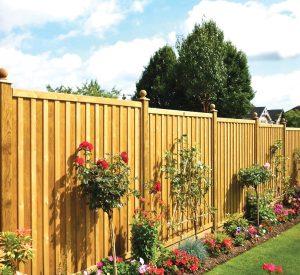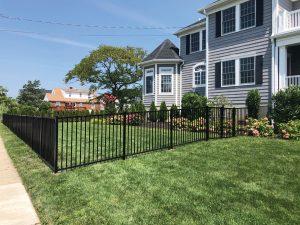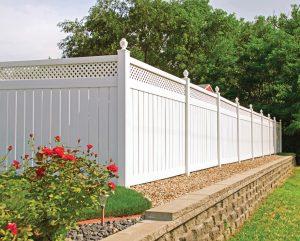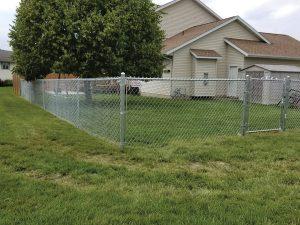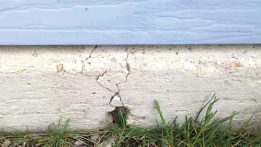So, you need a fence. Maybe it’s to keep out dangerous intruders or that Jack Russell terrier from across the street that keeps digging up your begonias. Perhaps it’s because your new neighbors are a little on the nosey side. Then again, maybe it’s because you realized you need to step up your game after seeing the fancy wrought iron fence that Eric from work had at his place. Whatever your reason for purchasing a new fence, there’s an option that can work for you and your home. With the right amount of research, you can finally find your “fence soulmate”—a fence that looks good, meets your needs, and falls within your budget. That perfect fence is out there, and with just a little forethought and consideration, you can soon bring it to your yard. By selecting the right materials, hiring the right installer, and asking the right questions, you can navigate your way through the fence installation process with ease.
Today’s market offers a wide variety of materials and styles ranging from wood to wrought iron. Each material has its own styles, strengths, and weaknesses, and it’s important to keep these in mind when searching for the right fit for you.
WOOD
Wood fencing is a staple of American neighborhoods. The wood “white picket fence” has become a stereotype of idyllic suburban living, and there’s no surprise why—wood fencing is cheap, it’s versatile, and it has a simple, traditional look that can give your yard a timeless charm. Wood is easy to work with, so most installers offer a wide variety of styles, including box, picket, and privacy. Wood tends to rot and warp over time, so make sure that your installer stains their wood, making it more resistant to degradation.
ORNAMENTAL/ALUMINUM
Aluminum fencing, often referred to as “ornamental fencing,” is sturdy and low-maintenance, and it lasts a lifetime. Aluminum fencing is often seen as a more decorative and distinguished alternative to standard wood fencing and can be customized with rings, scrolls, and pointed finials for added aesthetic value. These fences typically come in black but can be repainted to your liking.
VINYL
Although perhaps not as traditional as wood nor as sturdy as aluminum, vinyl fencing is a viable alternative to both. Vinyl fencing requires essentially no maintenance and tends to be more durable than wood. Vinyl tends to cost more than wood initially, but the money saved in maintenance costs over the years makes vinyl a less expensive option in the long term. Unlike wood, vinyl cannot be painted or refinished once it has been installed, so if you want to change the look of the fence, a complete replacement is necessary.
WROUGHT IRON
Strong, durable, and elegant, wrought iron fencing is a centuries-old tradition. Although significantly more expensive than other traditional fencing options, wrought iron can be well worth the cost and is the go-to for those looking for a highly decorative and ornamental fence that can provide reliable protection against intruders.
CHAIN LINK
If you’re looking for a basic fencing option that establishes a border around your yard while containing children and keeping out wild animals (including that Jack Russell from across the street), then chain link may be the option for you. It doesn’t deter burglars the way privacy fences do, as it can be easily scaled by any dedicated intruder, but it does provide inexpensive, functional coverage of your front and back yard with no maintenance required.
TIPS FOR INSTALLATION
Finding the right professional fence installer can feel like a daunting task. When talking to an installer, be sure to ask plenty of questions to ensure that their services meet your needs. Consider asking about the following topics:
Will the installer be determining where underground utilities are located beneath your yard?
Checking for utilities may seem like an unnecessary step when installing a fence, but it’s important to remember that many utilities are buried just a few inches beneath the ground, and any damage done to an underground line may result in costly and time-consuming repairs. If your contractor does not check for utilities, then consider hiring a land surveyor to mark utility lines before installation begins. Otherwise, you may be able to view a map of your utility lines (and property lines) on your property’s deed.
What kind of wood does the installer provide?
The type and quality of the wood used to make your fence can make a big difference regarding both aesthetic quality and longevity. If you’re interested in purchasing a wood fence, ask if your installer’s wood is pressure-treated to protect against insects and aging and if it has been stained to prevent cracking and warping. Be sure to also ask about the dimensions of the wood your installer offers. Otherwise, you may find yourself unpleasantly surprised by the height, width, or thickness of your posts and pickets after installation.
How will your installer handle sloping?
If your yard features any sloping, then you need to consider how you want your fence to accommodate these changes in elevation. To install your fence across a sloped section of yard, you essentially have three options. First, there’s the option of keeping the fence parallel with the ground. With this approach, your fence will follow the slope of your yard, preventing the formation of gaps between the fence and the ground. While some find this approach undesirable, as it prevents your fence from appearing consistently straight, you can ask your contractor about racked installation, which some homeowners find provides a more pleasing aesthetic. In a racked fence, posts and pickets are oriented vertically and parallel with one another while the horizontal rails connecting them follow the slope of the yard. Second, there is the option of stepping. Stepped fences remain level regardless of the changes in elevation of the ground beneath them. In order to address the slope of the yard, stepped fences are installed in side-by-side sections at varying elevations. The resulting aesthetic therefore resembles a series of steps in a staircase. Third, you have the option of calling in a landscaper to grade out your yard so that your fence can be built on flat ground. By taking the steps to make your lawn completely level, you can guarantee that your fence will turn out perfectly straight, giving you the aesthetic you want.
What warranties does the installer offer?
Many companies offer various warranties relating to fence maintenance, replacement, and repairs. See what options your local installers offer to see what works best for your budget and time frame.
Am I allowed to build a fence where I live?
According to the Tallahassee Land Development Code, Section 10-302, no earth disturbance can be made within a designated canopy road zone. Canopy road zones pertain to all land within 100 feet of the center point of any roadway defined as a canopy road. If you believe you may live within one of these zones, contact the City of Tallahassee’s Growth Management Department at (850) 891-7100 and ask if your yard is subject to restrictions on earth disturbances resulting from fence construction.
Fence installation can feel overwhelming. With so many materials, styles, and installers to choose from, it can be difficult to know where to turn. However, by asking the right questions and staying mindful of your needs, you can find your fence soulmate in no time at all. Whether it’s to keep out that Jack Russell for good or to put Eric-from-work’s wrought iron to shame, adding a fence to your yard will provide your home with style, protection, and privacy for years to come. ![]()
Farrell Erickson
Home & Yard Magazine


